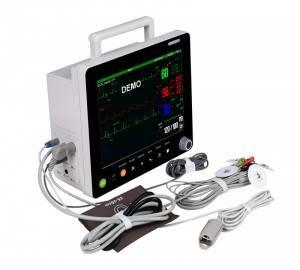We know that when the precordial area is unwell, an electrocardiogram should be checked; when a part of the heart is unwell, a gastroscopy should be performed;
When your head is uncomfortable, sometimes your doctor will do an EEG. So, why should an EEG be performed? What diseases can an EEG detect?


The human brain has 14 billion brain cells, including 250 million nerve cells. Nerve cells can produce
A total of 8 bioelectrical signals are produced, and EEG is the use of an EEG machine to record the bioelectrical information of the human brain. Just the EEG
The detector electrodes of the machine are attached to the scalp, and the instrument can receive the changes in potential during the entire process of brain electrical activity. At this time, the scanning pen draws various curves on the moving drawing. Due to the different frequencies and amplitudes of the curves, different waveforms are formed.
read
into an electroencephalogram.
In general, everyone’s EEG has its own inherent characteristics. EEG waves are divided into slow activity waves and fast activity waves.
Under normal physiological conditions, it has normal circadian rhythms and inherent characteristics, and when the EEG is abnormal, it indicates the possibility of lesions. Therefore, EEG can be used to evaluate the physiological function of the brain. Since the EEG is a non-invasive test, it can be repeated multiple times. Which diseases require EEG examination?
(1) Mental illness: In order to diagnose schizophrenia, manic depression, mental disorders, etc., EEG examination can be done. Other disorders of the brain including epilepsy were excluded.
(2) Epilepsy: Because EEG can accurately record scattered slow waves, spike waves or irregular spike waves during seizures, EEG is very accurate for diagnosing epilepsy.
(3) Some substantial lesions in the brain: some brain tumors, brain metastases, intracerebral hematomas, etc., often cause varying degrees of
good
EEG changes. These EEG changes, according to the location, nature, stage and damage of the lesions, may appear focal slow waves, which can diagnose lesions in the brain
read
EEG is an effective method to examine changes in brain function, because changes in brain function are dynamic and variable. Therefore, for some patients with clinical manifestations of brain dysfunction, no abnormality was found in an EEG examination.
When reading room 449, the existence of brain diseases cannot be completely ruled out, and EEG review should be carried out regularly to accurately detect diseases.
Post time: Jun-01-2022

